Arts & Entertainment Community
Gig Harbor Now and Then | These boots were made for walking … just not inside
Before addressing the answer to the question from our last column, it’s worth mentioning that if you haven’t seen Tonya Strickland’s 14 Names to Remember project, a tribute to the Peninsula’s WW2 dead, there’s plenty of time left to do so. It’s well worth seeing.
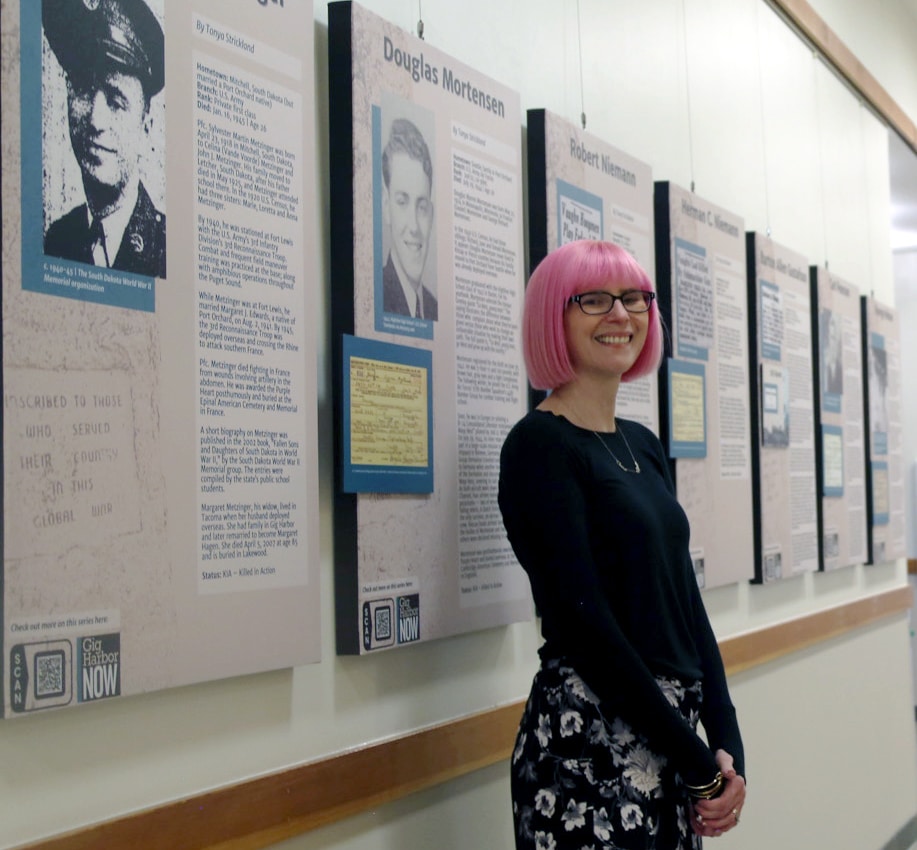
Tonya Strickland with panels from the 14 Names to Remember project at the Civic Center in Gig Harbor on Thursday, May 16, 2024.
Unlike the granite monument in Kenneth Leo Marvin Veterans Memorial Park that bears the same names, Tonya’s exhibit tells each man’s story, and several of the short profiles include photos.
The project is something that should’ve been done years ago, but it took the dedication and determination of Tonya Strickland to finally get it done. It runs through the end of June at the Gig Harbor Civic Center at 3510 Grandview Street in Gig Harbor.
No corks allowed
Our previous column noted that in the early days of logging on the Peninsula, a common sight on the outside of businesses, boarding houses, community halls, and some private homes were signs — often misspelled — prohibiting a certain behavior specific to loggers from being carried on inside those buildings.
We found it interesting that last week’s column drew an exceptionally high number of readers — at least three!
The way we know we had triple the normal number of readers is because we received three responses to the question of the week, whereas usually we get none.
One reader knew the correct answer and the other two came reasonably close.
What certain behavior did those signs prohibit?
Corrine Powell, a docent at the Harbor History Museum, guessed the banned behavior might have been spitting (either on the floor or in a spittoon). While that was certainly a common logger behavior, the only reason it wasn’t the answer we were looking for is because that crude habit was not peculiar to loggers.
Gig Harbor Now’s Two in Tow and On the Go columnist Tonya Strickland ventured this image of a self-composed sign warning against chainsaw activity indoors as her answer:
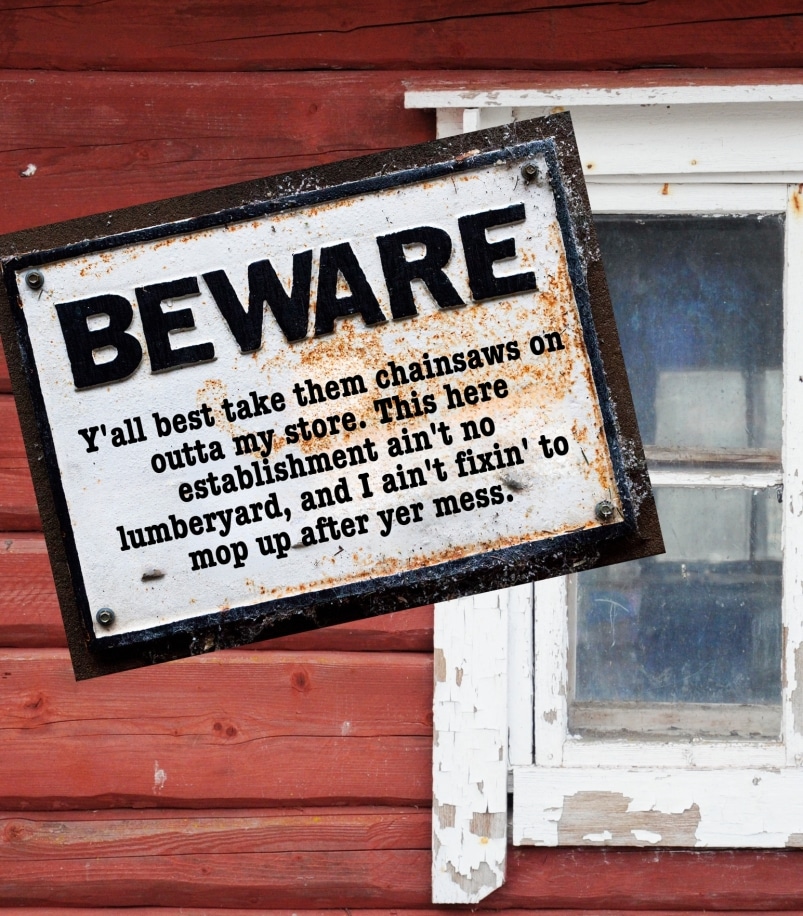
While that’s a plausible, though potentially gruesome, answer, it’s not what we were looking for. The early loggers on the Peninsula didn’t have chainsaws.
The real answer: Kevin Powell of Gig Harbor didn’t have to guess. He knew the correct answer didn’t involve saws, but was a matter of footwear. Specifically, the wearing of caulked boots.
Informally called “caulks,” the word is pronounced “corks.”
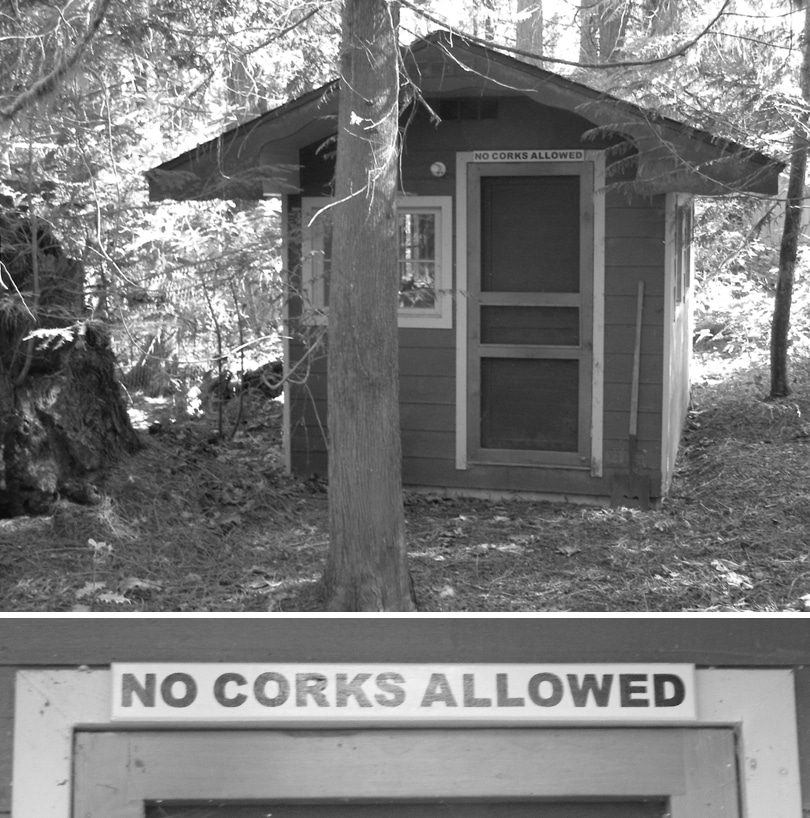
The word “caulks” is pronounced “corks,” which is probably why it was so often misspelled. Photo by Greg Spadoni.
Caulk boots were (and still are) short or tall, laced, leather boots with spiked soles worn only by loggers in the early days. (Today a variety of other forest workers wear them too.) The many sharp spikes provided traction on springboards, downed tree trunks and limbs, and floating logs. They also destroyed wood floors in houses, stores, pool halls, taverns, and other buildings frequented by loggers. The most aggravating damage may have occurred in community halls, where members prided themselves on the quality of their dance floors.
It can only be imagined how many times little, gray-haired, broom-wielding old ladies chased big, strong, manly loggers from their homes, boarding houses, and businesses for making the absent-minded mistake of walking indoors with their caulks on. And to be fair, those thoughtless miscreants fully deserved getting their butts swatted with the business end of a broom or their heads bonked with the handle. Caulks can do a lot of damage with just a few steps.
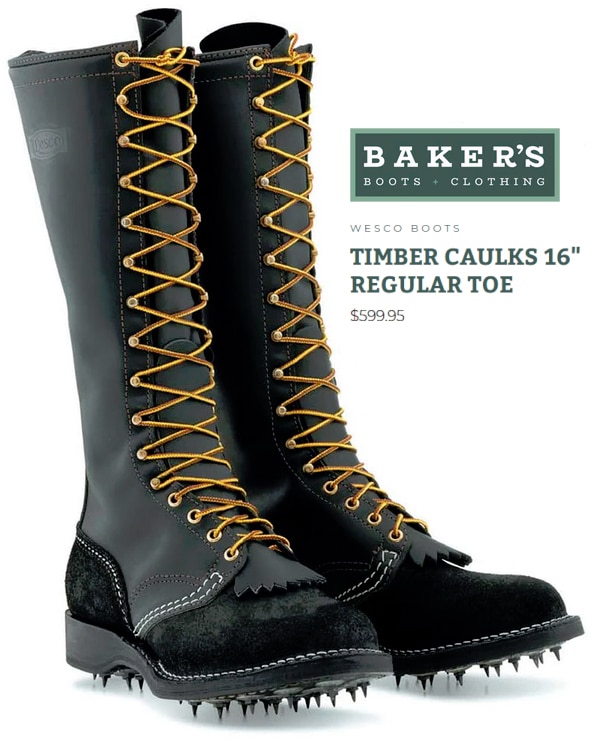
Commonly misspelled “corks” or “calks,” caulks (caulked boots) are not for wearing indoors. This photo of Wesco Boots’ 16-inch timber caulks was provided by the Baker Shoe Company of Eugene, Oregon. https://bakershoe.com
A lingering problem
The practice of careless — or uncaring — loggers ruining floors with their caulks wasn’t confined to the early days. It continued on through and beyond World War 2, and included the destruction of more modern flooring than traditional wood. Concerning the new floor in the Gig Harbor post office, The Peninsula Gateway wrote on its on May 11, 1951, front page: “The asphalt tile lobby flooring, which drew much favorable comment from many of the postmasters attending the recent 5th District meeting at Gig Harbor, is being badly scarred by a very few patrons with corks [caulks] in their shoe soles.”
Apparently the Gig Harbor post office didn’t have any little old ladies with brooms to keep order.

A wooden broom handle wielded by a frail old woman couldn’t do much real damage with a single whack on the noggin, but it sure could hurt! Photo by Greg Spadoni.
A related question
Speaking of the Gig Harbor post office in 1951, where was it?
That was not much of a setup, but it’s the question of the week.
Where was the Gig Harbor post office located in 1951?
There are plenty of people on the Peninsula old enough to remember, if you can find one to ask (I am not one of them).
We’ll have the answer on June 3.
Gig Harbor Now and Then Editorial Opinion
Because we didn’t get fired over our first Gig Harbor Now and Then editorial a few weeks ago, we’re compelled to run a second one. We won’t get fired this time, either. You’d be hard pressed to find anyone who disagrees with this one. It is very nearly a universal truth.
Gig Harbor’s official date of arrival
It is usually obvious which historical events a municipality should consider important enough to commemorate, by proclamation, monument, or other means of observation. But not every neighborhood, town, or county gets it right all the time. Sometimes their choices range from peculiar to downright odd, making the selection difficult to understand. Equally puzzling are the ones they should be noting but do not. In spite of its slogan, The Maritime City, Gig Harbor has missed the boat on one of the pivotal dates in its history, letting it pass year after year without so much as an acknowledgment of its existence, never mind importance.
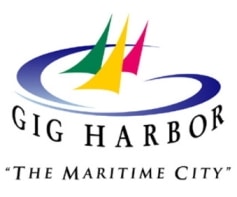
Naturally enough, national holidays always lead the list of observed dates, regardless of a community’s size. It’s when a place gets large enough to have a mayor or governing council that it begins to add dates of its own choosing. They don’t become holidays, but are celebrations of civic pride, specific to the particular area. Founders’ Day is often among the first added, as it gives a town occasion to blow its own horn and celebrate itself. In Gig Harbor the Blessing of the Fleet is the equivalent to other places’ Harvest Days, both concerned with the economic importance of local, seasonal industries. But there are other events, perhaps less obvious, though no less important, that are key to understanding a community’s history.
Aside from dates of original settlement, municipal incorporation, or changes of season, there are events that can mark the exact point of a community’s general acceptance as a legitimate entity. It is the proof of a geographical area’s standing among its neighbors; the acknowledgement of its very worth as an active and important participant in the world that surrounds it. For Gig Harbor — indeed the entire area from the Narrows Bridges to the southern tip of the Key Peninsula — that date is June 4, 1960.
Gig Harbor’s city government is asleep at the switch
The fact that Gig Harbor neither celebrates nor even acknowledges the importance of June 4, 1960, is the direct fault of every mayor and city council member who has served since that day, save one. By ignoring that date, no matter whether through deliberate neglect or willful ignorance, they have failed, and continue to fail, to be the leaders they were elected to be. Indirectly, the fault lies with the citizens of Gig Harbor, for it is they who continue to elect representatives who are unwilling or incapable of being the leaders they are supposed to be.
The only elected official of Gig Harbor since 1960 who deserves a pass is former City Councilman Keith Uddenberg, for he is singularly responsible for the city’s arrival into the modern world. On June 4, 1960, Councilman Uddenberg, at his personal expense in his Thriftway supermarket on Judson Street in downtown Gig Harbor, orchestrated the transformation from sleepy, unengaged backwater to active, participating community.
Since that fateful day, the people and businesses of the city have moved ever forward, onward and upward, never looking back. Unfortunately, an unbroken string of elected (non) leaders of the town have never looked back either, failing to note Gig Harbor’s pivotal moment in history.
June 4, 1960, is Gig Harbor’s official date of arrival. The unwillingness of the town’s leaders to recognize that fact will neither change nor diminish it, especially for those of us who witnessed the event.
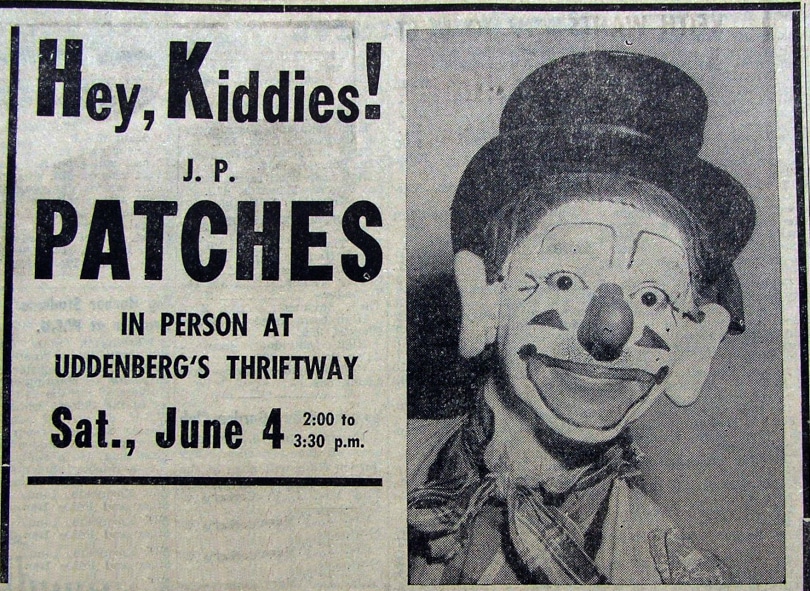
Orchestrated by Keith Uddenberg, the June 4, 1960, appearance of J. P. Patches at Uddenberg’s Thriftway supermarket on Judson Street marked Gig Harbor’s official date of arrival. This advertisement from the June 2, 1960, issue of The Peninsula Gateway was found at the Harbor History Museum.
For their continuing utter failure to recognize a pivotal moment in local history, the elected officials of Gig Harbor, past and present, deserve to be taken to task for nothing less than dereliction of duty.
There will be 15 days from the publication of this editorial to the 64th anniversary of Gig Harbor’s official date of arrival. That is ample time for the current mayor and city council to come up with an appropriate acknowledgement of that milestone event of 1960. In light of the previous 63 consecutive missed opportunities, who would be foolish enough to bet they will?
Greg Spadoni of Olalla has had more access to local history than most life-long residents. During 25 years in road construction working for the Spadoni Brothers, his first cousins, twice removed, he traveled to every corner of the Gig Harbor and Key Peninsulas, taking note of many abandoned buildings, overgrown farms, and roads that no longer had a destination. Through his current association with the Harbor History Museum in Gig Harbor as the unofficial Chief (and only) Assistant to Linda McCowen, the Museum’s primary photo archive volunteer, he regularly studies the area’s largest collection of visual history. Combined with the print history available at the Museum and online, he has uncovered countless stories of long-forgotten local people and events.
